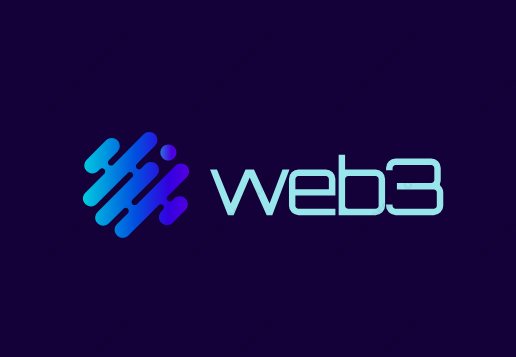Web3 For Dummies Key Takeaway:
- Web3 is a concept that emphasizes decentralization and evolving user experiences, allowing for a more secure and user-centric internet.
- Key components of Web3 include blockchain technology, cryptocurrencies, NFTs, and the metaverse, which offer new ways of exchanging value and creating digital assets.
- Web3 differs from Web1 and Web2 in terms of the decentralized nature of its infrastructure, the emphasis on user ownership and control, and the potential for enhanced privacy and security.

Web3 is transforming the way we interact with the internet, offering both decentralized systems and enhanced user experiences. In this section, we explore the fundamental concepts of decentralization and the evolving user experiences that Web3 brings. Dive into the conceptual realm of Web3 and discover how it is reshaping our digital landscape.
Understanding the concepts of decentralization and evolving user experiences
Web3 is about decentralization and better user experiences. It means we can have more control and ownership over our data and digital assets. It uses tech like blockchain, cryptocurrency, NFTs and the metaverse.
Decentralization puts power in the hands of users instead of being concentrated in one place. This helps us to make informed decisions about our data. It also makes user experiences better, with interactivity, personalization and immersion.
Blockchain provides a transparent and reliable way to record transactions. Cryptocurrency is a decentralized way to pay. NFTs tokenize digital assets so they can be traded and create new value. The metaverse is a virtual world where users can explore, socialize and do activities.
Web3 is different from Web1 and Web2. It is about peer-to-peer interactions, personalization, and digital ownership. It offers more privacy, security, and innovation. But there are also challenges like scalability, regulation, and adoption.
For brands, it is a chance to engage with consumers in new ways. Consumers get more control over their digital identity and customized content.
Web3 could reshape digital economies, business models, and many sectors including finance, gaming, art, and entertainment. To make the most of it, brands and consumers need to stay up-to-date on tech advances and industry trends.
Conceptual Part of Web3
Web3 is a concept of decentralized internet and evolving user experiences. It’s made up of blockchain, crypto, NFTs, and the metaverse. These components give users control over identities, data, and assets. Decentralization has the potential to disrupt business models and empower people.
Blockchain technology makes secure and transparent transactions without intermediaries. Cryptography and distributed consensus algorithms provide a trustless environment. Crypto helps with cross-border transactions and programmable money.
NFTs are unique digital assets bought, sold, or traded on blockchain. They’re popular in art, collectibles, gaming, and virtual real estate. Artists can monetize creations and have verifiable ownership records.
The metaverse is an immersive virtual environment. People and computer-generated elements interact in real-time, blurring physical and digital realities. It offers endless possibilities for socializing, entertainment, commerce, and education.
Web3 is different from Web1 and Web2. Brands can use blockchain for supply chain management, intellectual property rights, and targeted campaigns. Digital consumers have more control and can be rewarded for attention or participation. Challenges such as scalability, regulations, and user adoption need to be addressed for wider adoption.
Everyone needs to understand decentralized systems, smart contracts, and cryptography. Businesses must embrace innovation and explore new ways of engaging customers in the metaverse. Consumers should protect their identities in this new paradigm.
Come explore Web3, where blockchain, crypto, NFTs, and the metaverse create a digital paradise!
Key components of Web3: blockchain, cryptocurrency, NFTs, and the metaverse
Explore the fundamental building blocks of Web3: blockchain, cryptocurrency, NFTs, and the metaverse. Uncover the power of blockchain technology, discover the functionalities of cryptocurrencies, delve into the world of NFTs, and unlock the limitless possibilities of the metaverse.
Blockchain Technology
Blockchain technology, as a core component of Web3, brings about a revolutionary impact on industries while empowering users with enhanced privacy and control. It operates as a decentralized and distributed ledger system, seamlessly recording and validating transactions across multiple nodes, eliminating the need for intermediaries or central authorities. The transparency and security it offers result from its tamper-proof nature, ensuring the integrity and immutability of data, making it perfectly suited for digital currencies, smart contracts, supply chain management, and decentralized apps.
Moreover, the impact of blockchain extends beyond industries, effectively safeguarding user privacy by decentralizing data storage and reducing the risk of breaches or unauthorized access. Users gain full control over their digital assets through cryptographic keys, ensuring a heightened sense of ownership and security. Trustless interactions are made possible through consensus algorithms like proof-of-work or proof-of-stake, providing transparency and fairness in all transactions.
A distinctive feature of blockchain is its facilitation of programmable money via smart contracts. These self-executing contracts automatically trigger predefined actions upon specific conditions, eliminating intermediaries in financial transactions, thus enhancing efficiency and reducing costs. Additionally, blockchain technology supports the development of decentralized apps (DApps) functioning on interconnected computers, resulting in a decentralized architecture that enhances security, resists censorship, and encourages increased user engagement in decision-making processes.
In conclusion, the pivotal role of blockchain technology within Web3 cannot be overstated, as it fosters decentralized systems prioritizing transparency, security, and user empowerment. The decentralized, immutable, and programmable nature of blockchain makes it a disruptive force with the potential to reshape various industries and redefine the very essence of the Internet.
Cryptocurrency Functions
Cryptocurrencies have multiple purposes. They enable peer-to-peer transactions without banks or other financial institutions. They can hold value over time and they provide a standardized way to measure the value of goods and services. Blockchain and cryptography make them transparent and secure.
Cryptocurrencies can also provide banking services to the unbanked population. They make cross-border transactions easier and cheaper. They can reshape industries and give people more power in the digital economy.
Brands should understand cryptocurrencies and how to use them. They can use them as payment options or blockchain-based solutions for supply chain transparency. Digital consumers can benefit from faster transactions, reduced fees, and increased privacy.
Cryptocurrencies and Web3 offer new possibilities. Brands and individuals can innovate and adapt to stay ahead. So join the cryptocurrency revolution and experience the financial possibilities it brings.
NFTs
NFTs have been gaining attention lately for their capacity to revolutionize ownership rights in the digital world! Blockchain technology provides transparency and immutability, while smart contracts enable users to buy, sell, and trade virtual items securely. This opens new opportunities for artists and content creators to monetize their work.
However, when you’re buying or selling NFTs, it’s important to do your research on the creator’s reputation and the authenticity of the asset.
Plus, the Metaverse is where reality and virtuality come together, allowing you to be anyone you want – except a responsible adult!
The Metaverse
The Metaverse is a digital landscape that opens up new creative and innovative doors. It allows users to explore and connect with people worldwide. As tech advances, the Metaverse has the potential to shape the future of online interactions.
Users can make avatars and explore virtual worlds. They can go to events, play games, shop, and even work. The Metaverse is powered by blockchain, providing security and ownership of digital assets. NFTs (Non-Fungible Tokens) are valuable for making rare digital collectibles.
The Metaverse could revolutionize gaming, art, fashion, and more – giving businesses and individuals new opportunities. Brands should focus on user experiences rather than selling products or services. To succeed in the Metaverse, brands must understand community dynamics and engage users through storytelling and interactive elements.
Exploring the differences between Web1, Web2, and Web3
When it comes to the evolution of the internet, we can’t overlook the significant shift from Web1 to Web2 and now, the rising prominence of Web3. In this exploration, we’ll dive into the distinctions between these different iterations. Discover the defining features, functions, and possibilities that Web1, Web2, and Web3 bring to the digital landscape. So stay tuned to unravel the transformative journey of the internet as we know it.
Web1
Web1 was the first version of the internet. It had static websites with one-way communication. Users could only read info, not interact or contribute. This version lacked user-generated content and social media. Websites were built using HTML tags and tables. Focus was on giving out info, not creating interactive experiences. Web1 was less about participation and more about consumption.
It differed from Web2 and Web3. It was not decentralized and user-centric like its successors. So Web1 has now become a relic of a past era.
Tim Berners-Lee coined the term Web1 to describe the early version of the internet. Web2 allowed users to share videos. Web3 takes this to the next level – cats can now buy real estate in the metaverse.
Web2
Web2 brought about the growth of social media platforms, enabling worldwide connection. E-commerce websites changed the way people shop online, providing convenience and accessibility. Collaborative tools, such as Google Docs and Slack, revolutionized teamwork by giving remote teams a platform to work together.
Web2 focused on user experience; interactivity and connectivity were essential. Individuals could engage with content creators, join online conversations and share their own ideas.
To further advance Web2, consider:
- Personalization algorithms for tailored recommendations.
- Seamless cross-platform functionality.
- Enhanced data privacy measures and personalized experiences.
These changes promote relevant content based on individual interests, reducing friction points between applications. Plus, data privacy helps build trust between users and creates personalized experiences.
Welcome to Web3, where decentralization and evolving user experiences make the online world unique.
Web3
Blockchain tech is an essential part of Web3. It provides a decentralized, transparent way to keep records and verify transactions. Crypto is digital money, enabling secure and efficient financial transfers. NFTs are Non-Fungible Tokens–they let you create and own unique digital assets. The “metaverse” is a virtual space where people interact and engage in immersive digital settings.
Web3 has lots of advantages over Web1 and Web2. These include better security, trust, and control over digital stuff. Though, there are scalability, interoperability, and regulatory issues to consider.
Brands and digital consumers benefit from Web3. Brands can use it to create engaging customer experiences and explore new business models. Consumers get more control over their data and interactions.
In the future, Web3 could revolutionize finance, gaming, art, and entertainment. To stay ahead, businesses must understand decentralized tech and changing consumer expectations.
Web3: Benefits are great, challenges are exciting, and the future of the internet is ready to be shaped!
Benefits and challenges of Web3
Web3, the latest evolution of the internet, brings along both benefits and challenges. In this section, we will explore the advantages that Web3 offers, such as increased security and privacy, as well as the challenges it presents, like interoperability and user adoption. By understanding these key aspects, we can navigate the world of Web3 with confidence and make informed decisions about its potential impact on various industries.
Benefits
The potential of Web3 for transformation brings benefits to both brands and digital consumers. These are: increased security and transparency, control and ownership for users, and more possibilities for innovation.
Blockchain technology underpins Web3, providing secure and transparent transactions. This gives trust between users, and removes the need for middlemen, reducing cost and improving efficiency.
Users have more control over their data and digital assets through Web3. By using decentralized platforms and smart contracts, people can own, manage and make money from their personal information, creating a fairer online world.
Also, Web3 provides developers and entrepreneurs with the chance to create decentralized applications (dApps) and services. Cryptocurrencies and non-fungible tokens (NFTs) let them make unique digital art, virtual real estate and collectibles.
These benefits mean that brands and digital consumers can take part in a more equitable, secure, and user-friendly digital space.
Furthermore, Web3 stands apart from Web1 and Web2 with its emphasis on decentralization. Power is shared among users, rather than centralized organizations. This changes existing business models, while giving opportunities for collaboration and innovation.
Brands can build trust with customers by using Web3’s decentralization principles. Examples include using blockchain technology to track supply chains, and adopting decentralized identity solutions.
Exploring Web3’s challenges is like walking a tightrope, blindfolded, juggling flaming chainsaws and avoiding banana peels!
Challenges

Web3 brings many challenges that must be solved for its success and wide-scale acceptance. This is due to Web3 being decentralized, and user experiences continually evolving.
- Security: A major challenge is security. With blockchain technology increasing in use, it has become a target for hackers and malicious actors. It is important to ensure the security of transactions, smart contracts, and data since Web3 is decentralized.
- Scalability: With more users using Web3, scalability is another challenge. The blockchain must be able to handle increased transaction volume without becoming slow or congested. Solutions like layer 2 protocols are being made to address this.
- User Adoption: Web3 needs widespread usage from mainstream users. Educating users about Web3 and providing user-friendly experiences is necessary for this.
Also, there are issues to consider when using Web3. For example, governments are still figuring out how to regulate cryptocurrencies and NFTs, which can cause compliance problems. Additionally, interoperability between different blockchains needs to be addressed so that Web3 can reach its full potential. Protocols are being standardized to create communication between blockchain networks.
In conclusion, challenges come with implementing Web3. But if these challenges are tackled, decentralization, cryptocurrencies, NFTs, and the metaverse will become a part of the digital landscape. Are brands prepared for this?
Implications for Brands and Digital Consumers
Web3 is revolutionizing how brands and digital consumers interact. In this section, we’ll discuss the implications of Web3 for both brands and digital consumers. You’ll discover the exciting possibilities that Web3 presents for brands to engage with their audience on a deeper level, as well as the new opportunities available to digital consumers in this decentralized landscape. Get ready to explore the future of brand-consumer relationships in the era of Web3.
Brands
Web3’s transformation has major implications for brands as they explore the digital realm. With the rise of decentralized tech, brands now have the chance to engage customers in new ways. Blockchain, crypto, NFTs, and the metaverse let brands create distinctive experiences and build trust with secure, transparent consumer interactions.
Brands can make use of Web3’s parts for a more powerful presence and a faithful customer base. Blockchain tech ensures the authenticity and traceability of products or services. Crypto functions provide smooth transactions and rewards. NFTs enable partnerships, exclusive releases, and ownership proof. Exploring the metaverse opens up immersive experiences that transcend typical limits.
| Components | Description |
|---|---|
| Blockchain Technology | Guarantees transparency and security in brand interactions |
| Cryptocurrency Functions | Makes transactions smooth and incentivizes customer engagement |
| NFTs | Offers brand collaborations and verifies ownership |
| The Metaverse | Broadens brand experiences beyond traditional boundaries |
Web3 also offers brands potential for improved customer data security and privacy. Blockchain tech offers decentralized storage solutions, reducing risks from centralized data breaches. Moreover, by taking on this decentralized framework, brands can build a community with their customers by involving them in decision-making processes or using user-generated content.
Brands have developed over time from logos to entities that cultivate relationships with customers based on trust and shared values. In Web3, this growth is further boosted by tech advancements that let brands bond with their audience in a deeper way. Adapting to the changing landscape rewards brands with increased customer loyalty and advantage in a more digitalized world. Digital consumers are embracing the Web3 wave, where memes are currency, NFTs are status symbols, and the metaverse is their playground.
What are Digital Consumers?
Digital consumers, who actively engage with digital platforms and services, play a pivotal role in the ever-changing landscape of Web3. By utilizing technology, they gain access to a vast array of information, products, and entertainment available online.
These tech-savvy consumers have the unique advantage of directly interacting with the blockchain, enabling secure transactions and transparent record-keeping. The use of cryptocurrencies further empowers them with a decentralized form of digital currency, granting financial autonomy and greater control over their assets.
The rise of non-fungible tokens (NFTs) has introduced a whole new dimension to digital ownership, providing digital consumers with unique assets, such as art or virtual real estate, that they can truly call their own. This trend has brought about novel forms of ownership and value within the digital realm.
Another exciting development is the metaverse, where digital consumers can immerse themselves in virtual worlds, allowing them to socialize, trade, and even create content. This interconnected virtual space comes with the added benefit of a decentralized internet, granting users greater privacy and ownership over their data.
Given their active participation and adoption of innovative technologies, digital consumers are significant drivers of Web3 innovation, actively disrupting traditional business models across various industries. As they continue to embrace the possibilities of Web3, their influence will undoubtedly shape the future of the digital landscape.
However, digital consumers can face challenges in this new era. They need to be secure and protect their assets. Plus, they must continuously learn and understand the ever-evolving technologies. But, Web3 offers unprecedented opportunities for self-expression, financial independence, community building, and creative exploration for digital consumers.
Considering the future of the internet and adapting to the digital landscape
The internet is constantly evolving, and it’s crucial to stay ahead in the digital landscape. In this section, we’ll explore the future of internet and how we can adapt to this rapidly changing environment. From emerging technologies to shifting user behaviors, we’ll dive into what lies ahead and the steps we can take to navigate this digital revolution. So, get ready to embrace the future of the internet and thrive in the ever-evolving digital world.
Future of Internet

The future of the internet is bright. Web3 has brought a new era, where decentralized technologies like blockchain, cryptocurrency, NFTs, and the metaverse are revolutionizing online interactions. Decentralization will be a key factor, giving individuals control over their data and digital assets.
Blockchain technology is vital. It provides a decentralized infrastructure, making it hard to alter or manipulate information. This enables secure peer-to-peer transactions without intermediaries.
Cryptocurrency is also set to shape the future. Digital currencies offer an alternative for online financial transactions, allowing seamless cross-border payments and reducing reliance on banking systems.
Non-Fungible Tokens (NFTs) are a unique development. They represent ownership or provenance of items such as artwork or collectibles. This lets creators monetize their work without intermediaries, and engage with their audience in new ways.
The metaverse is another exciting development. It’s a virtual reality space, offering users a multi-dimensional and immersive experience. They can explore virtual worlds, socialize, play games, attend events, and conduct business.
Brands must adapt to these emerging technologies. They need to leverage blockchain for transparency and create loyalty programs with cryptocurrencies. NFTs can be used to establish digital ownership or engage with customers. The metaverse offers opportunities to create virtual experiences and connect with a global audience.
Digital consumers will have more control over their data, improved security in online transactions, and access to digital assets and experiences. They’ll be able to own their online identities and reap rewards from participating in the digital economy.
Brands and digital consumers must stay informed about the latest advancements in Web3 technologies. Embracing decentralization can reshape industries and pave the way for a better internet experience.
Adapting to the Digital Landscape

Web3 has transformed the digital landscape. It ensures secure, transparent transactions and eliminates the need for intermediaries with cryptocurrencies. Non-fungible tokens (NFTs) have revolutionized ownership, enabling users to buy, sell and trade digital assets. This has brought excitement to the digital world and given rise to the metaverse – an immersive virtual realm.
Web3 stands out from Web1 and Web2. It focuses on privacy, autonomy and user control, shifting power away from centralized entities. Brands must adapt their strategies to engage users in a personalized manner. Digital consumers benefit from increased privacy protection and control over their data.
However, Web3 still has challenges such as scalability issues, regulatory concerns and risks related to security. Brands should leverage blockchain technology for supply chain transparency, integrate NFTs into marketing campaigns and explore opportunities in the metaverse.
In this Web3 era, brands that prioritize user privacy and offer customizable experiences will be successful. Adapting to this digital landscape is essential for brands to thrive.
Conclusion: The transformative potential of Web3 and its impact on various industries
Web3 technology, based on blockchain, peer-to-peer networks, and decentralized applications, is reshaping industries across the board. It brings decentralization, trust, and security, fostering a new era of digital interactions. In finance, DeFi platforms are disrupting traditional banking by enabling direct peer-to-peer transactions, cutting out intermediaries, and extending financial services to the unbanked.
Healthcare is benefiting from Web3 by enhancing data security and privacy, promoting seamless interoperability among providers, and empowering patients with control over their health information. The supply chain industry is being transformed through transparent tracking systems, ensuring product authenticity, and fostering traceability. Meanwhile, Web3 is revolutionizing real estate by facilitating fractional ownership, streamlining property transactions, and enhancing transparency in property management.
Beyond its impact on specific industries, Web3 is changing the dynamics of digital platforms by empowering users with control over their data and identities. By creating decentralized exchanges, lending platforms, and asset management solutions, Web3 is democratizing financial services and eliminating the need for centralized authorities. Also, it enables autonomous organizations (DAOs) with community-driven decision-making, resistant to censorship and corruption.
Web3’s integration of blockchain technology ensures secure and transparent systems across healthcare, supply chain, and real estate, fostering trust among stakeholders and efficient data sharing. It encourages innovation and growth by reducing costs through automated processes and ensuring transparency through smart contracts.
The potential of Web3 to revolutionize industries is undeniable, therefore presenting opportunities for innovation and growth. As its development and adoption continue, Web3 will shape the future of industries worldwide, creating a more decentralized, secure, and transparent global ecosystem.
Some Facts About Web3 For Dummies:
- ✅ Web3 is a shift in the internet that focuses on decentralization and evolving user experiences. (Source: Team Research)
- ✅ It includes concepts such as blockchain, cryptocurrency, NFTs, and the metaverse. (Source: Team Research)
- ✅ Web3 aims to centralize the user experience by combining these technologies. (Source: Team Research)
- ✅ It is projected to offer unified user experiences, a crypto and NFT market, and interactive virtual worlds. (Source: Team Research)
- ✅ Brands should think about the future of the internet and consider the demands of digital consumers. (Source: Team Research)
FAQs about Web3 For Dummies
What is Web3 and how does it interact together online?
Web3 is a shift in the internet that aims to centralize the user experience and focuses on decentralization and evolving user experiences. It includes concepts such as blockchain, cryptocurrency, NFTs, and the metaverse. Web3 allows users to interact together online through virtual worlds and VR.
What is blockchain and how does it record transactions?
Blockchain is a way to store and transfer digital information securely. It is a distributed ledger technology that records transactions across a large network of computers. Also, each transaction is recorded in a “block” and added to a “chain” of previous blocks, creating a permanent and transparent record of transactions.
What is digital loyalty software and how does it work?
Digital loyalty software, like the one offered by PassKit, integrates with mobile wallets like Apple Wallet and Google Pay. It allows customers to save digital loyalty cards and collect points on their phones. This not only eliminates the need for physical cards but also provides convenience for both customers and businesses.
How does Web3 facilitate data transfers between users?
Web3 aims to provide unrestricted access to information and facilitate data transfers through decentralized networks. With Web3, users have ownership of their data and can securely transfer it between different applications and platforms without relying on a centralized authority.
What are non-fungible tokens (NFTs) and how are they bought and traded securely?
NFTs are digital receipts of copyright stored on the blockchain, allowing for secure buying and trading of digital goods, including artworks and collectibles. Each NFT is unique and cannot be replicated, making it a secure way to buy and sell digital assets on the internet.
What is the Semantic Web and how does it relate to Web3?
The Semantic Web, originally envisioned by Tim Berners-Lee, plays a crucial role as one of the key features of Web3, aiming to create a more responsive and connected web. This intelligent and open web leverages AI and machine learning to interpret content conceptually and contextually, with a primary focus on word understanding. As a result, it enables personalized browsing experiences and significantly improves search capabilities.


child porn
certainly like your website but you need to take a look at the spelling on quite a few of your posts Many of them are rife with spelling problems and I find it very troublesome to inform the reality nevertheless I will definitely come back again
child porn sex
you are truly a just right webmaster The site loading speed is incredible It kind of feels that youre doing any distinctive trick In addition The contents are masterwork you have done a great activity in this matter
Its like you read my mind You appear to know so much about this like you wrote the book in it or something I think that you can do with a few pics to drive the message home a little bit but instead of that this is excellent blog A fantastic read Ill certainly be back
I have been surfing online more than 3 hours today yet I never found any interesting article like yours It is pretty worth enough for me In my opinion if all web owners and bloggers made good content as you did the web will be much more useful than ever before
Somebody essentially help to make significantly articles Id state This is the first time I frequented your web page and up to now I surprised with the research you made to make this actual post incredible Fantastic job
Hey there You have done a fantastic job I will certainly digg it and personally recommend to my friends Im confident theyll be benefited from this site
ALAYINIZI SIKCEM RAHAT YOK SIZE
モンスターハンター月下雷鳴
素晴らしい記事!読むたびに新しいことを発見できます。
k8 カジノ 一花
いつも役立つ情報を提供してくれて、本当にありがとうございます。
geinoutime.com
Hongzhi 황제는 잠시 당황했고 그의 눈썹은 단단히 주름졌습니다.
Thanks I have just been looking for information about this subject for a long time and yours is the best Ive discovered till now However what in regards to the bottom line Are you certain in regards to the supply
I was looking through some of your articles on this
website and I think this internet site is rattling instructive!
Keep posting.Blog money
I just could not leave your web site before suggesting that I really enjoyed the standard information a person supply to your visitors Is gonna be again steadily in order to check up on new posts